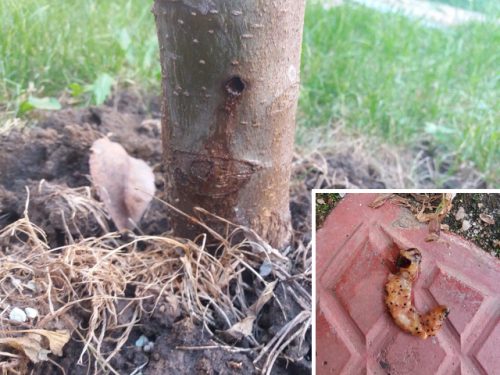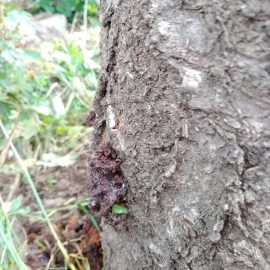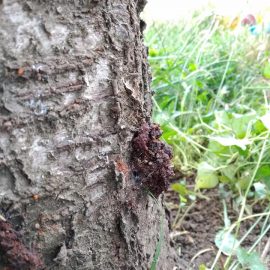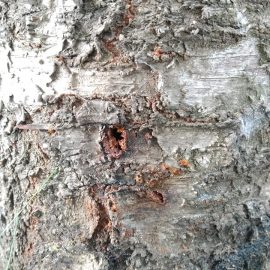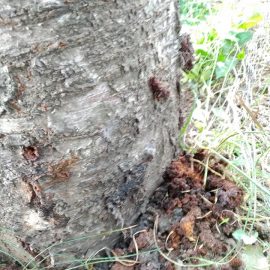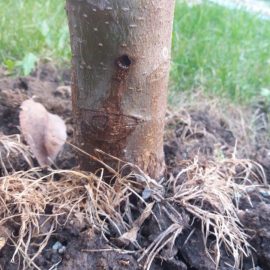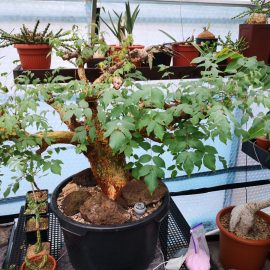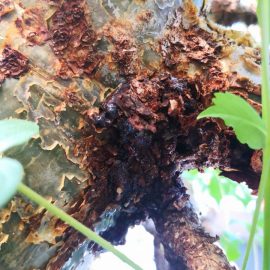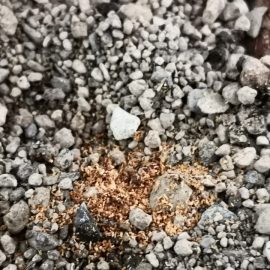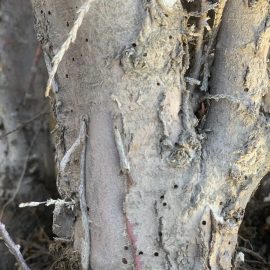The goat moth (Cossus cossus) – pest management
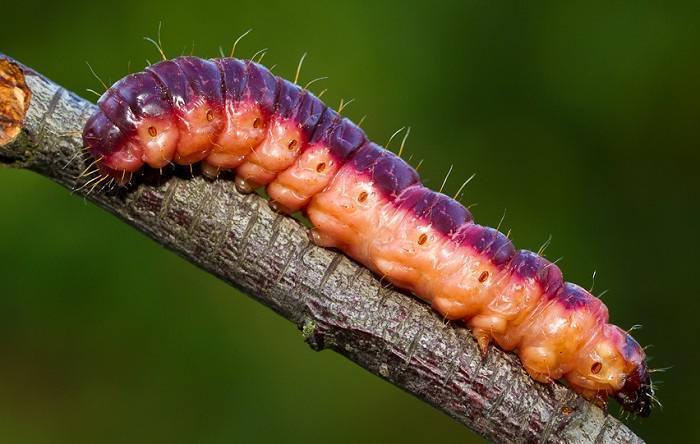
Prevalence. The goat moth is found both in the lowland area and in the mountainous area. It is a polyphagous species that prefer ornamental trees (poplar, willow), but also fruit trees.
Description. The adult is a large butterfly, up to 120 mm long, and has an average wingspan of 60-70 mm. The forewings are brownish-gray in color, with sinuous lines, colored in all shades, from brown to gray. The hind wings are smaller and lighter in color. The body of the butterfly has lighter-colored rings, being covered with hairs and scales.
The antennae are short, the legs are light in color, covered with numerous hairs. The eggs are oval, 1.7 mm long, red-brown.
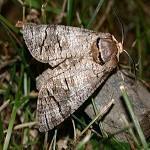
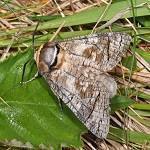
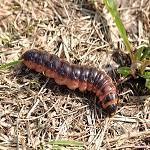
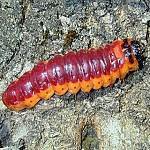
The larva is nude, with a large flattened head and strong jaws. The false abdominal legs are provided with a ring with spikes and hooks. The young larvae are reddish-pink, and later the abdomen and sides turn pink, while the dorsal part turns dark brown.
Ventrally, the larva is yellow, and the cephalic capsule and the two thoracic shields are glossy black. The larvae emit the smell of vinegar, an odor produced by the secretions used during the process of gnawing the wood.
During the last stage, the larvae measure 80-100 mm in length. The pupa is red-bricky, and in the anterior part, it has a short and wide growth. It is located in a hard cocoon made of coarse sawdust and silk threads. For cutting the cocoon, the larva is provided with thorns on the abdominal rings.
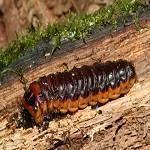
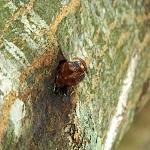
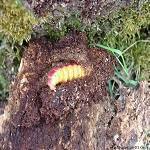
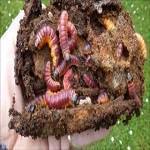
Biology and ecology. The goat moth produces a generation once every 2 years. In the first winter it hibernates in the galleries drilled by newborn larvae in the bark, and in the second winter, it hibernates as a fully developed larva, in the galleries dug in wood.
In the spring of the third year, the fully developed larva gnaws a hole in the bark, and in its proximity, it makes a cocoon of sawdust and then enters the pupal stage. Adults appear after 4-6 weeks (June-August) and are active at night.
The goat moth females, after copulation, lay during the night, in the bark’s cracks, or at the base of the trees, between 900-1500 eggs, in piles of 10-50 eggs, which they cover with a gray-whitish secretion that forms a protective shield. After about 2 weeks, the newly born larvae penetrate the bark, drilling initially common galleries. In these galleries, they remain grouped and overwinter or they may reach the wood, where they also remain for the overwintering period.
The following spring, the larvae drill individual galleries and form holes through which excrement and sawdust are pushed out. In these large galleries, drilled in the wood, they overwinter for the second time.
In the spring of the third year, the larva that overwintered for the second time, drills in the bark a new gallery, which it covers with a sawdust plug and pupates.
When it turns into a chrysalis, the caterpillar fixes on the bark a stopper impregnated with wood scraps. In the absence of food, the larva leaves the host (the attacked tree) and looks for another place to finish its development.
Attacked plants and damages. The goat moth develops on many broad-leaved trees, including fruit trees, but prefers softwood trees (poplar, willow).
The damages are caused by the larvae, which initially gnaw the space between the bark and the wood, then directly the wood. From the galleries, they push out: sawdust, excrement, and a viscous liquid. Over time, the trees and shrubs wither. The larvae drill ascending longitudinal galleries, deep, in the branches and trunks. The holes in the galleries are filled with reddish sawdust with the smell of acetic acid.
In the galleries thus formed, various microorganisms enter, which cause the wood to rot. The attack is recognized by the presence of galleries and sawdust with excrement fallen at the base of the trunk.
Control. The attack is detected by seeing the butterflies and observing the sawdust, with the smell of vinegar, fallen at the base of the trunks or on the branches of the trees. Severely attacked poplar and willow trees should be cut down or burned immediately, and plantations should be kept in good health.
Recommended method for expelling larvae to the outside
With the help of a flexible steel wire that is inserted into the gallery (make a small loop at the top), try to take the larvae outside (the galleries can reach 0.5 m in length). After removing them, disinfect the area with a copper-based solution and seal the gallery with wax or mastic. It is important to seal the entrance hole, otherwise, the gallery drilled by the larva will become a shelter during the winter for other pests, which will be protected not only from the cold but also from the treatments carried out during the dormancy period.
Recommended products
-
You can find products on a different store
Change Store -
You can find products on a different store
Change Store -
You can find products on a different store
Change Store -
You can find products on a different store
Change Store -
You can find products on a different store
Change Store -
You can find products on a different store
Change Store -
You can find products on a different store
Change Store -
You can find products on a different store
Change Store -
You can find products on a different store
Change Store -
You can find products on a different store
Change Store -
You can find products on a different store
Change Store -
You can find products on a different store
Change Store -
You can find products on a different store
Change Store -
You can find products on a different store
Change Store -
You can find products on a different store
Change Store -
You can find products on a different store
Change Store -
You can find products on a different store
Change Store -
You can find products on a different store
Change Store -
You can find products on a different store
Change Store -
You can find products on a different store
Change Store -
You can find products on a different store
Change Store -
You can find products on a different store
Change Store -
You can find products on a different store
Change Store -
You can find products on a different store
Change Store
Control treatments against adult butterflies can also be applied during the flight stage with specific insecticides.
Recommended products
-
You can find products on a different store
Change Store -
You can find products on a different store
Change Store -
You can find products on a different store
Change Store -
You can find products on a different store
Change Store -
You can find products on a different store
Change Store -
You can find products on a different store
Change Store -
You can find products on a different store
Change Store -
You can find products on a different store
Change Store -
You can find products on a different store
Change Store -
You can find products on a different store
Change Store -
You can find products on a different store
Change Store -
You can find products on a different store
Change Store -
You can find products on a different store
Change Store -
You can find products on a different store
Change Store -
You can find products on a different store
Change Store -
You can find products on a different store
Change Store -
You can find products on a different store
Change Store -
You can find products on a different store
Change Store -
You can find products on a different store
Change Store -
You can find products on a different store
Change Store -
You can find products on a different store
Change Store -
You can find products on a different store
Change Store -
You can find products on a different store
Change Store -
You can find products on a different store
Change Store














































































































































































































































































































































































































































